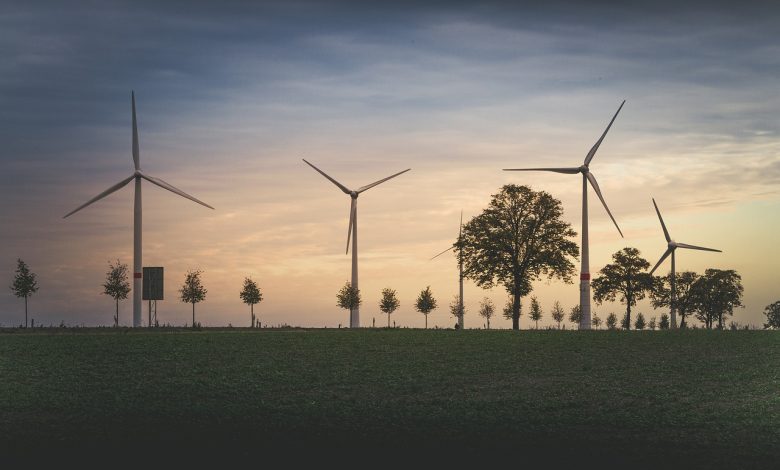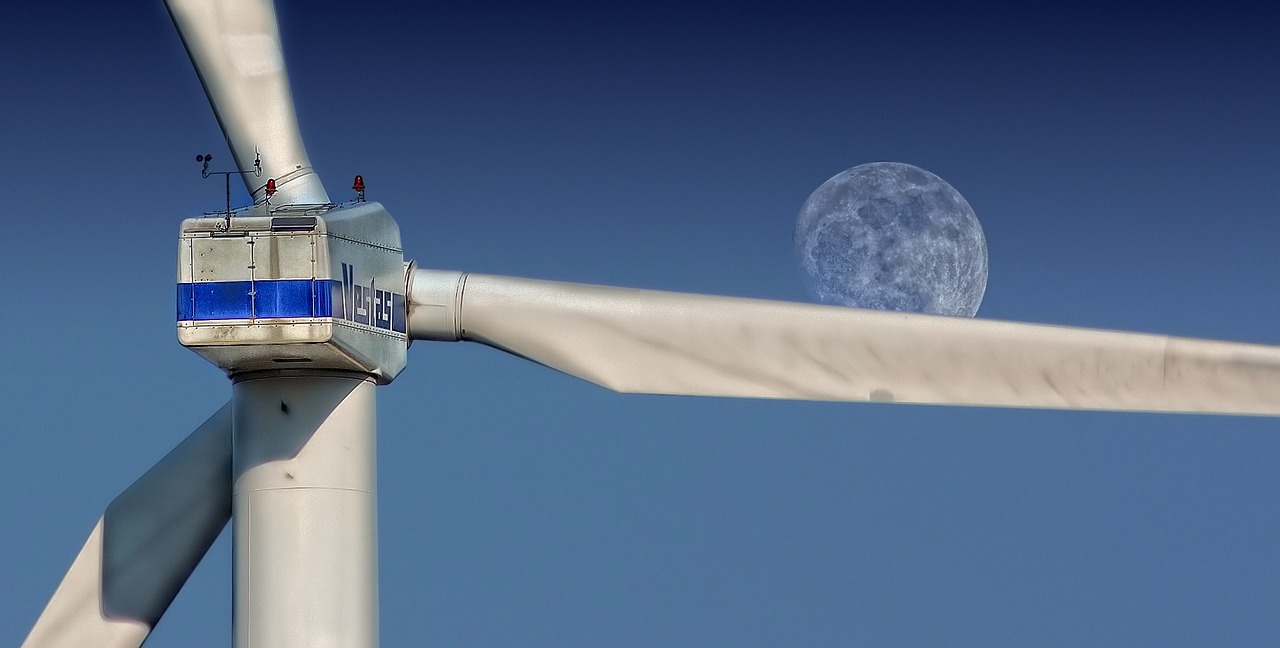Democrats Continue to Target Fossil Fuels with Climate Legislation

Addressing Climate Change
For years, the Democrats within the United States House of Representatives and the Senate have strived to address the issue of climate change through regulatory policies. Many of these policies have specifically targeted the fossil fuel industry. Other regulations have been aimed at preventing pollution within the oil, natural gas, and coal sectors. However, as the issue of climate change has progressively become more prevalent within the scientific community, the Democrats continue to ramp up efforts to move forward with legislation to support the renewable energy industry while also disincentivizing the use of fossil fuels. Although, as the Trump administration has sought to thwart these renewable energy efforts and climate change initiatives, the Democrats just unleashed their most comprehensive climate plan to date.

The Democratic Climate Change Plan
Even with President Trump’s agenda to support fossil fuels, the Democrats unveiled their new strategy to move forward with a climate change agenda to counteract Trump’s efforts to support the fossil fuel industry. At the end of June, the Democrats revealed a new 538-page report outlining a broad list of proposals to support green energy, restrict fossil fuels, and mitigate the impacts of climate change. In addition to proposing to cut all of the nation’s carbon emissions by 2050, the Democrat’s climate change proposal calls for an elimination of fossil fuel-powered vehicle sales by 2035, while simultaneously moving forward with a plan to eliminate all emissions from the country’s power sector by 2040 (Flavelle, 2020). These ambitious plans are representative of the most robust efforts seen to move the nation towards a net-zero economy.
Democratic House Speaker Nancy Pelosi of California and Representative Kathy Castor of Florida have led the charge to unveil their robust package of climate change initiatives. When looked at broadly, these proposals call for a series of new government regulations, infrastructure improvements, and tax incentives to stimulate growth in the renewable energy industry and the electric vehicle industry. When looking at the economics and the outlook of the electric vehicle industry, legislation will have to be passed in order to achieve the ambitious goals outlined in the Democrats’ plan. For example, even though the Democratic plan outlines how the country’s automakers would only be selling electric vehicles by 2035, nonpartisan electric vehicle projections from a variety of studies convey that the adoption rate will be much more tepid than Democrats hope it would be.

Is the Plan Realistic?
The global UBS investment bank recently published a report that estimates how electric vehicles sales will only make up 14 percent of global automobile sales by 2025, while BP released a similar report that conveys how the growth of electric vehicles may only rise to 16 percent by 2040 (Sioshansi & Webb, 2019). These projections are far below what the Democrats hope to achieve over the next couple of decades. However, as gas prices have plummeted and the Trump administration has slashed vehicle fuel economy standards, the current outlook for gas-powered vehicles remains strong. In fact, taking on the Corporate Average Fuel Economy (CAFE) standards has been a huge victory for the oil industry. While the standards were originally established by the U.S. Congress in 1975 to cut U.S. reliance on foreign oil, enhancements made to the efficiency of gas-powered vehicles meant that consumers would be purchasing less gasoline and diesel. Instead, the Trump administration rolled back fuel efficiency standards and froze requirements related to the production of hybrids and electric vehicles.
The Democratic climate proposal also recommends that all electric utilities are mandated to be net-zero carbon emitters by 2040. This represents another move towards a broad transition away from fossil fuels. While the U.S. has become the world’s largest oil producer under the Trump administration, the Democrats within the House of Representatives and the Senate hope to lose this title in the coming years by investing in a green energy revolution. Some economists and energy analysts say that this energy revolution has already started, even without the passing of this new climate legislation. Renewable sources of energy and cleaner-burning natural gas have already started to replace coal-fired power plants, while the petroleum-based internal combustion engine has started to become the target of efficiency regulations in the world’s developed countries.

The Global Energy Transition
Signs of a global energy transition can even be seen within nations that have historically profited off of robust oil and gas operations. Norway has taken dramatic steps to divest from the country’s fossil fuel stocks. Even though Norway is Western Europe’s biggest oil producer, Norwegian policy makers say that they are moving forward with plans to remove all investments in oil exploration and fossil fuel companies from its one trillion dollar sovereign wealth fund (Egan, 2019). U.S. Democrats hope to follow a similar lead to divest federal assets from the fossil fuel industry while also putting a price on carbon emissions, implementing strict limitations on methane emissions, and enhancing the energy efficiency of the nation’s homes and businesses (Mufson & Grandoni, 2020). While the Trump administration has signaled that it would not be expanding a tax credit for electric vehicles or extending wind and solar tax credits, Democrats hope to support these programs with their new legislation.
In 2020, with Republican Donald Trump occupying the White House and a Republican-controlled U.S. Senate, there is very little chance that the Democrats within the House of Representatives would be able to surpass these hurdles to implement their climate change legislation. However, Nancy Pelosi and Kathy Castor have signaled that they will continue to press forward with these efforts, irrespective of the current political climate. As the chair of the House Select Committee on the Climate Crisis, Representative Castor has said, “We’re going to press ahead with everything we can do in the near term” (Mufson & Grandoni, 2020). Leah Stokes, who is an energy policy specialist with the University of California at Santa Barbara, shares a similar view as Pelosi and Castor. She says, “I am very heartened to see the detail and ambition that the committee has put forward. It shows that the Democratic Party is waking up to the scale and urgency of the climate crisis” (Roberts, 2020).

Public Opinion is Changing
Public opinion about climate change has been changing in recent years within the United States. 2016 data from the Pew Research Center showed that only about 38 percent of American adults believed that addressing climate change should be a priority for the U.S. Congress. However, when American adults were resurveyed in 2020, 52 percent responded by saying that climate change should now be considered a top priority for the U.S. Congress (Flavelle, 2020). Although, even with the majority of Americans now showing that they support efforts to address climate change, the political climate within the U.S. has continued to become even more polarized along party lines. For example, when the Green New Deal was introduced in 2019 by Democratic Senator Edward Markey and Democratic Representative Alexandria Ocasio-Cortez, the proposed non-binding legislation was shot down in the U.S. Senate when not a single Republican voted in favor of the plan to reduce American dependence on fossil fuels.
Political Polarization
The political polarization of energy issues and climate change has always been a divisive topic in the U.S. House of Representatives and the Senate. However, some previous fossil fuel legislation has been bipartisan in nature after being endorsed by both Democrats and Republicans. One such example is the 1990 Oil Pollution Act that was adopted in an effort to strengthen and restructure the nation’s ability to prevent future oil spills while leveraging actions to enforce environmental remediation practices after incidents of oil pollution. Even though the Oil Pollution Act was originally sponsored by North Carolina Democrat Walter B. Jones within the U.S. House of Representatives, the legislation was ultimately signed into law by Republican President George H. W. Bush. It is now rare to see such bipartisan efforts like those related to the Oil Pollution Act.

The Republican Response
In response to the Democratic proposal to cut greenhouse gas emissions, bolster renewable energy use, and restrict the development of new fossil fuel infrastructure, the Republicans issued a formal statement to media outlets. Republicans within the House Select Committee on the Climate Crisis did not convey a message that blasted the movement towards renewable energy. Instead, Republican leaders stressed the importance of moving forward with an all-of-the-above energy strategy that allows fossil fuel producers to continue to produce oil, gas, and coal, while also continuing to encourage the development of alternative sources of energy. Republicans say that an all-of-the-above energy strategy may be the best way forward to keep energy costs low for U.S. consumers.
In addition to stressing the importance of an all-of-the-above energy strategy, Republicans questioned whether U.S. action on climate change would make any impact on a global scale if other countries didn’t join in as part of similar effort. The Republican statement suggested that the vast majority of greenhouse gas emissions would soon be coming from outside of the United States. “More than 105 percent of emissions growth will come from China and developing economies” (Mufson & Grandoni, 2020). Furthermore, Republicans expressed disappointment that the Democrats had crafted this proposed climate legislation without an opportunity for Republican input. Republicans say that they wanted the opportunity to craft bipartisan legislation that represented more of a middle-ground approach.

Is the U.S. Falling Behind?
Following the Republican statements, Democratic leaders swiftly responded by saying that there is no time for a middle-ground approach or an all-of-the-above energy. Instead, the Democrats highlighted the extreme urgency needed to mitigate the most consequential impacts of climate change. Moreover, the Democrats vehemently criticized the Republic notion that the U.S. shouldn’t act on climate change until other countries implement sweeping climate change legislation. Democrats noted that Republican efforts have now made the U.S. the only nation in the world to back out of the Paris Climate Accord. Therefore, rather than waiting for others to act on climate change, Democratic leaders say that the U.S. is quickly falling behind the rest of the world when it comes to the global energy transition.
As the Democrats have continued to unveil new aspects of their climate change legislation, they have also been highlighting the potential economic and health impacts of their proposal. Using peer-reviewed modeling and an analytical evaluation conducted by an independent energy consultant, initiatives similar to the Democratic climate change proposal could prevent 62,000 premature deaths annually, while also saving nearly $8 trillion in monetized health and climate costs (Roberts, 2020). This goes against the traditional Republican notion that it would be too expensive to move forward with climate change initiatives. In fact, Democrats say just the opposite – that it would be too expensive to not act on climate change. Studies have suggested that the current economic cost of restructuring the economy away from fossil fuels would be far less costly than waiting for the catastrophic impacts from climate change to occur (Flavelle, 2020).
Sources
Egan, M. (2019). “’No peak’ in oil demand yet, despite electric cars, IEA says.” CNN.
Irfan, U. (2019). “What’s Joe Biden going to do on climate change? Look at his record under Obama.” Vox.
Flavelle, C. (2020). “Democrats Detail a Climate Agenda Tying Environment to Racial Justice.” The New York Times.
Mufson, S., and Grandoni, D. (2020). “House Democrats unveil ambitious climate package, steering toward a net-zero economy by 2050.” The Washington Post.
Roberts, D. (2020). “House Democrats just put out the most detailed climate plan in US political history.” Vox.
Siegel, J. (2020). “Biden may use financial regulations to slow fossil fuel investments.” The Washington Examiner.
Sioshansi, F., & Webb, J. (2019). “Transitioning from conventional to electric vehicles: The effect of cost and environmental drivers on peak oil demand.” Economic Analysis and Policy.



